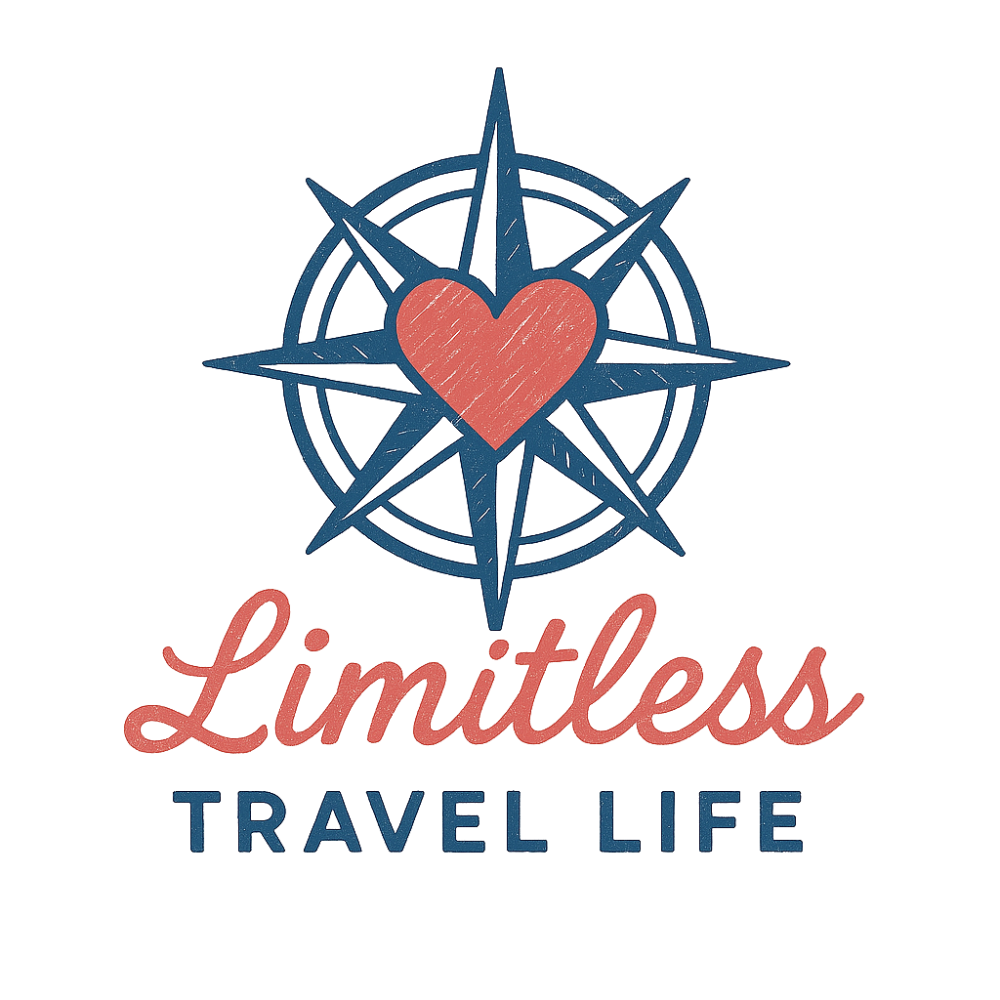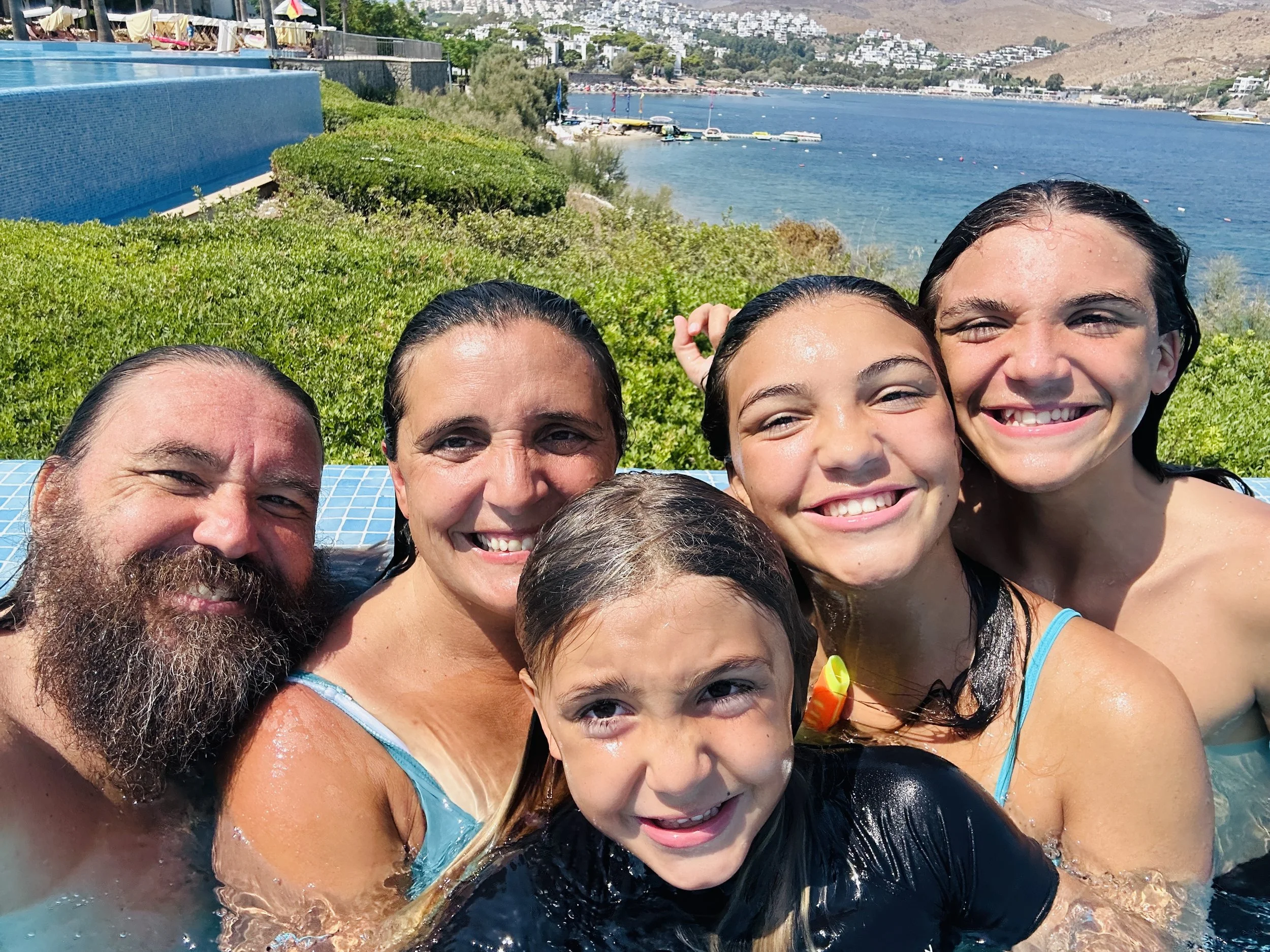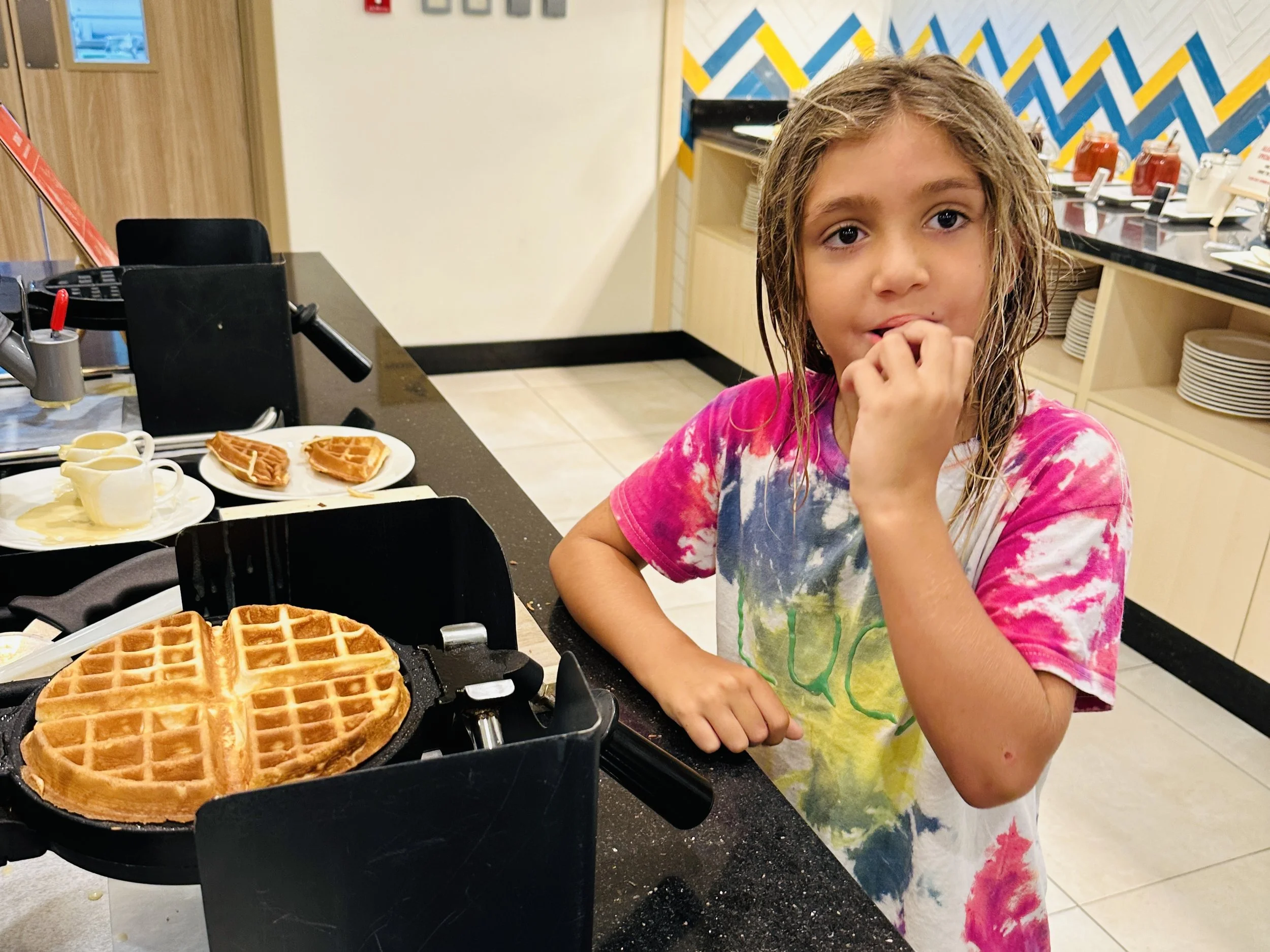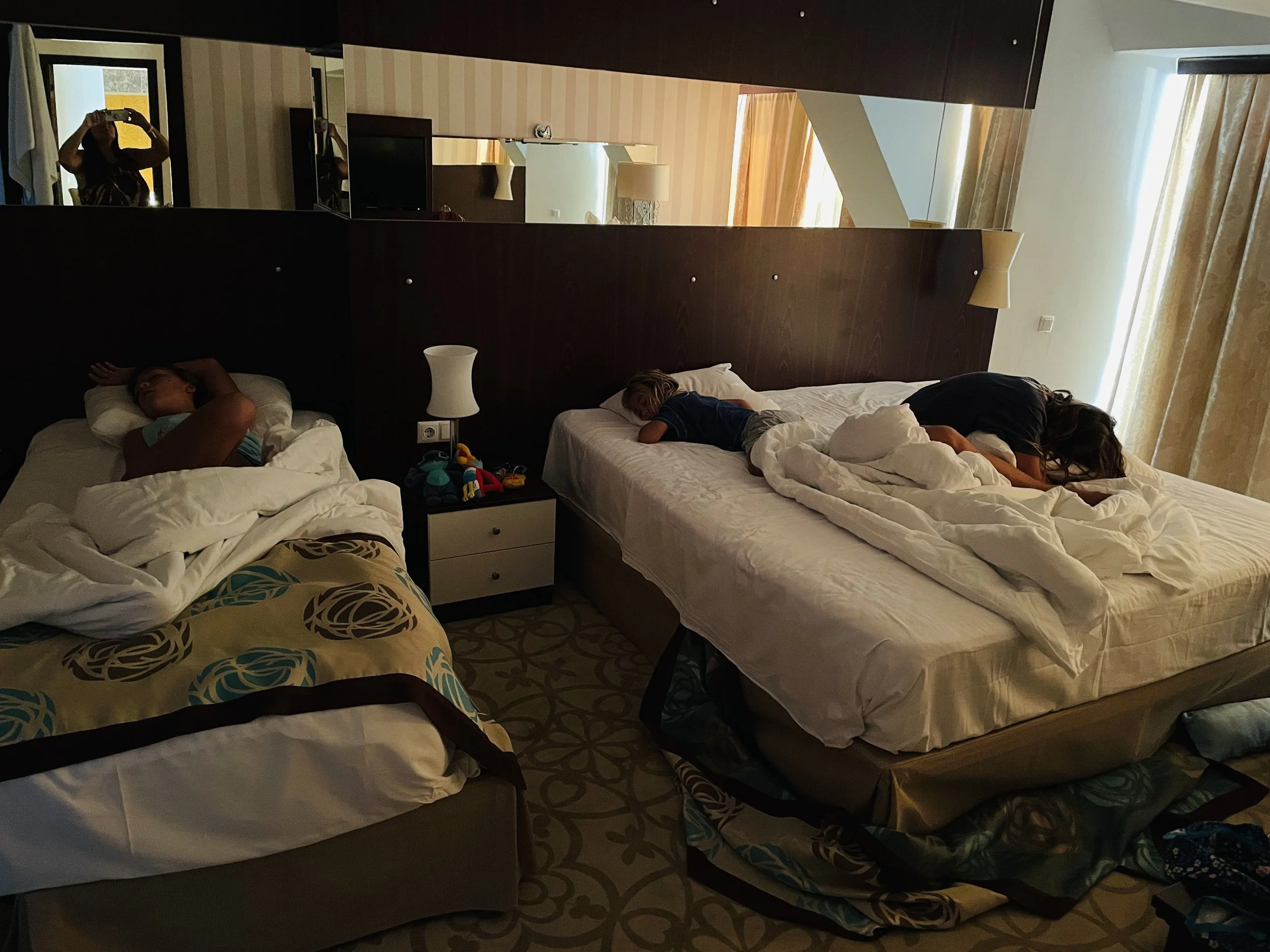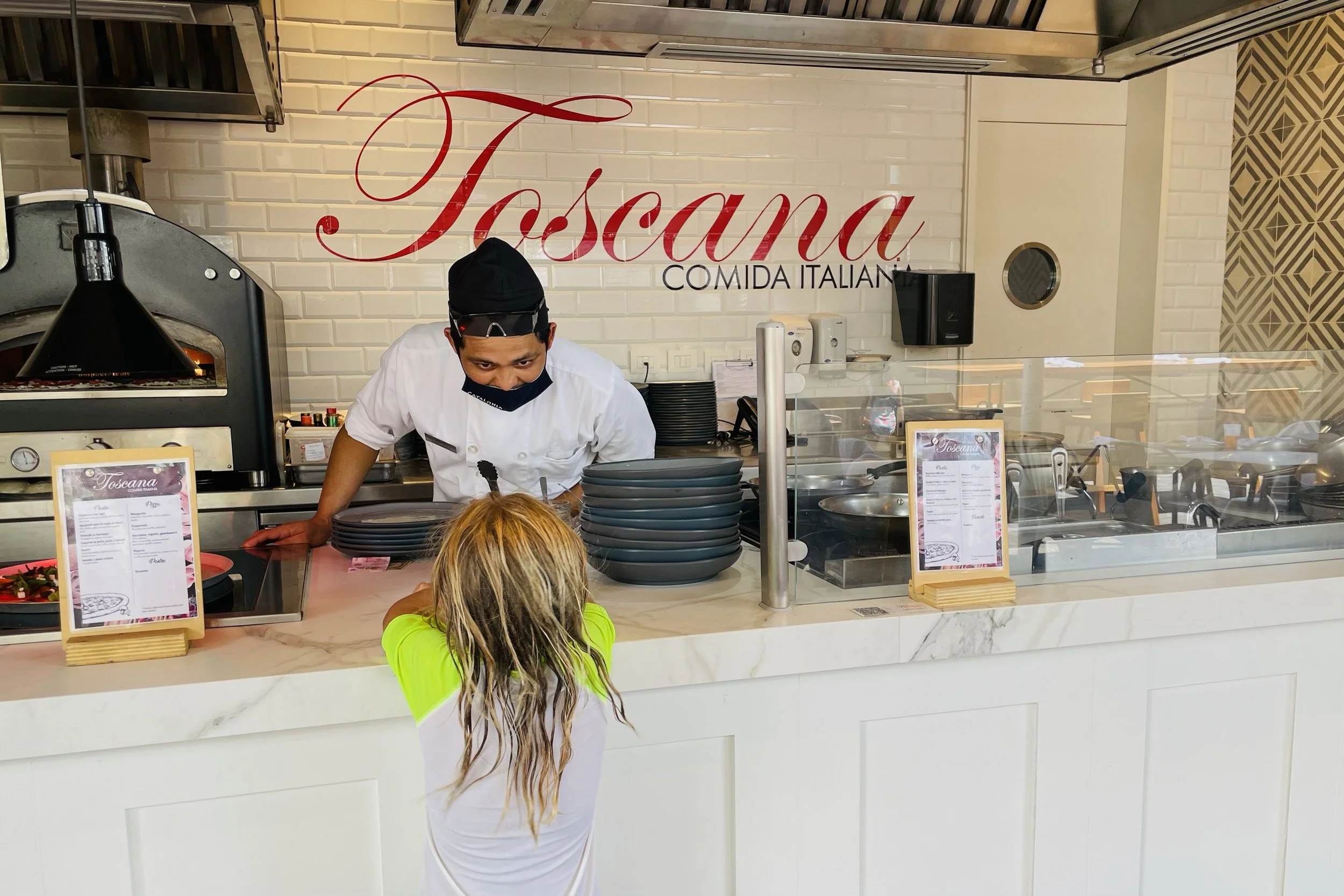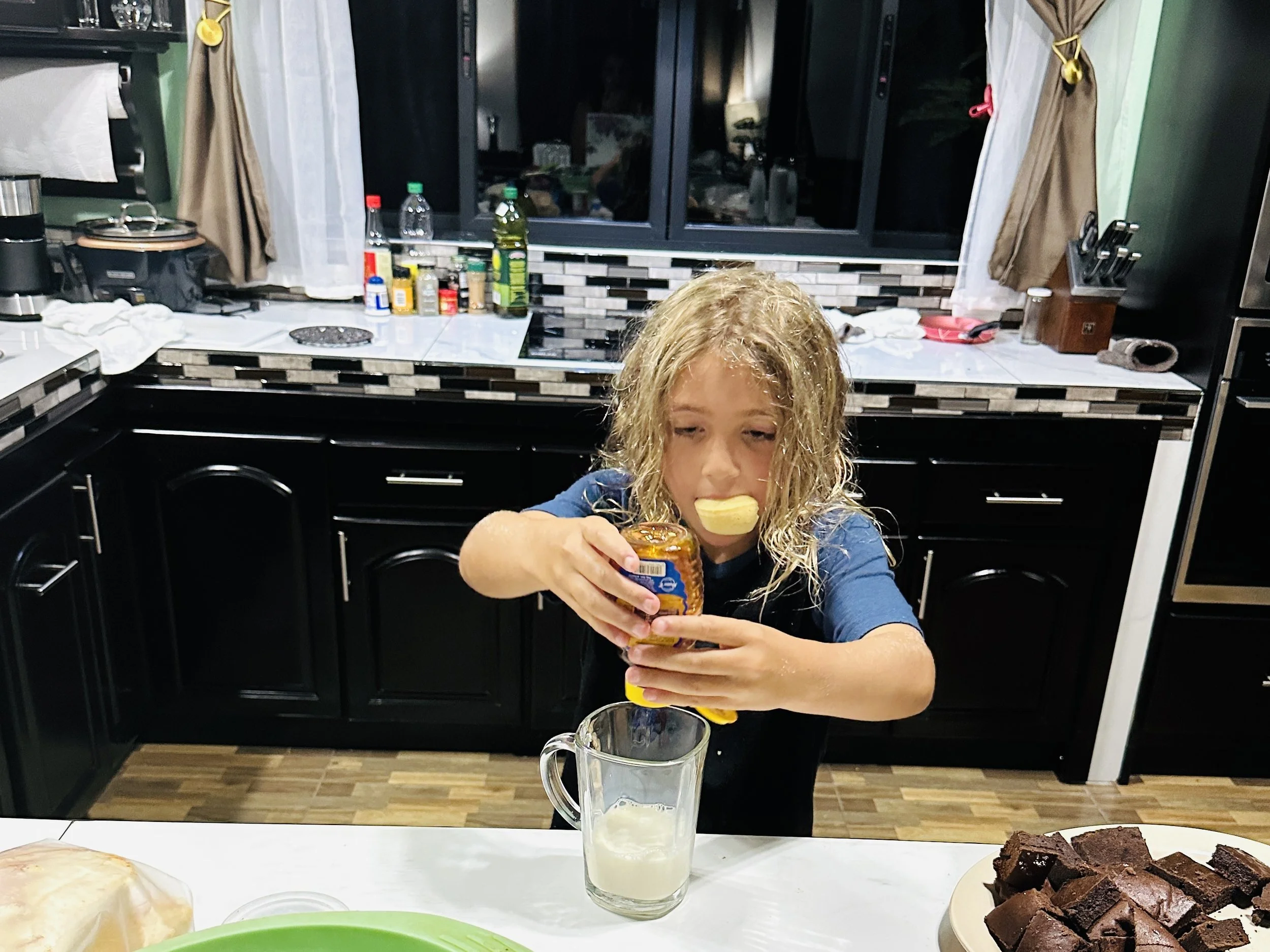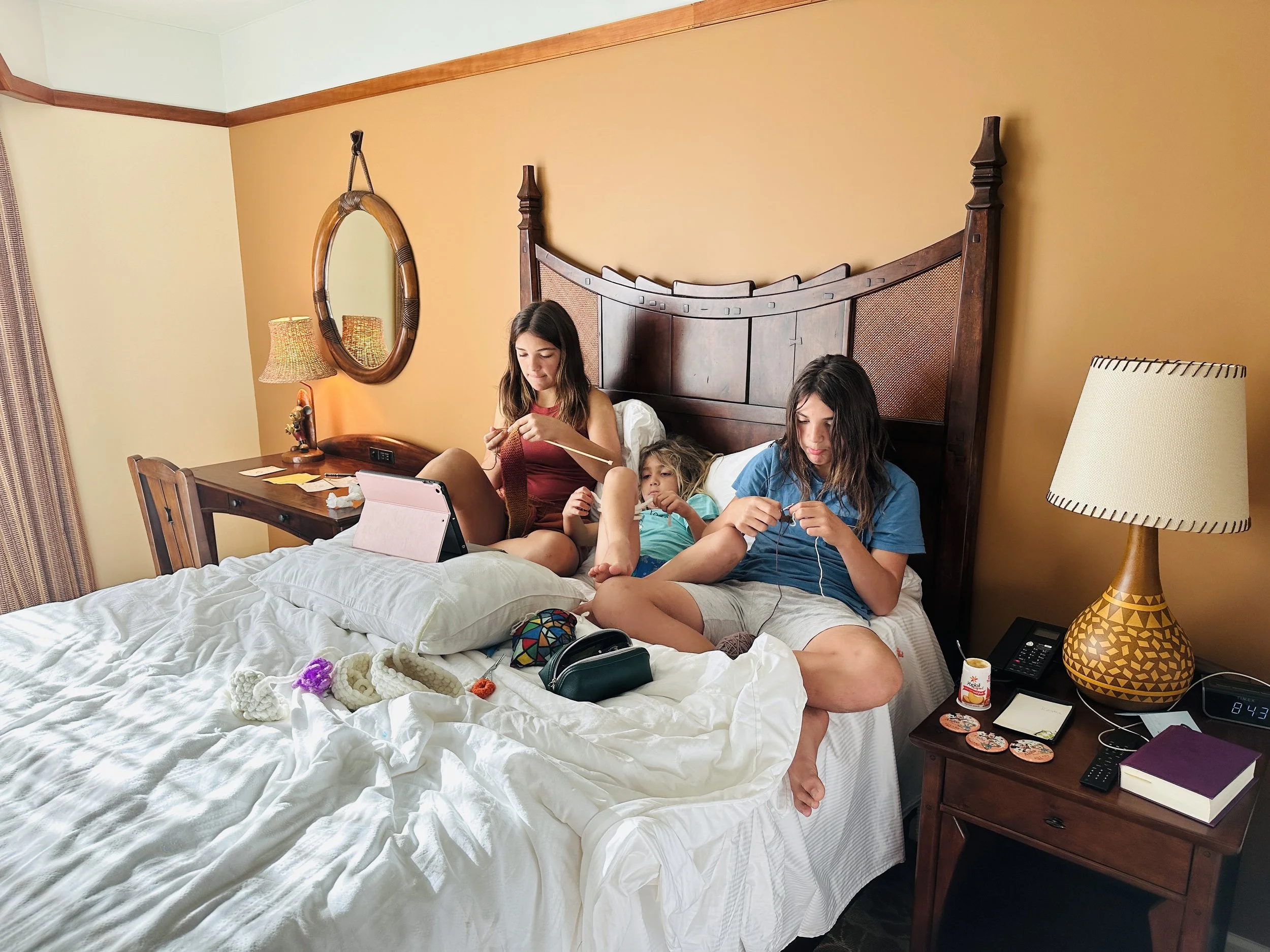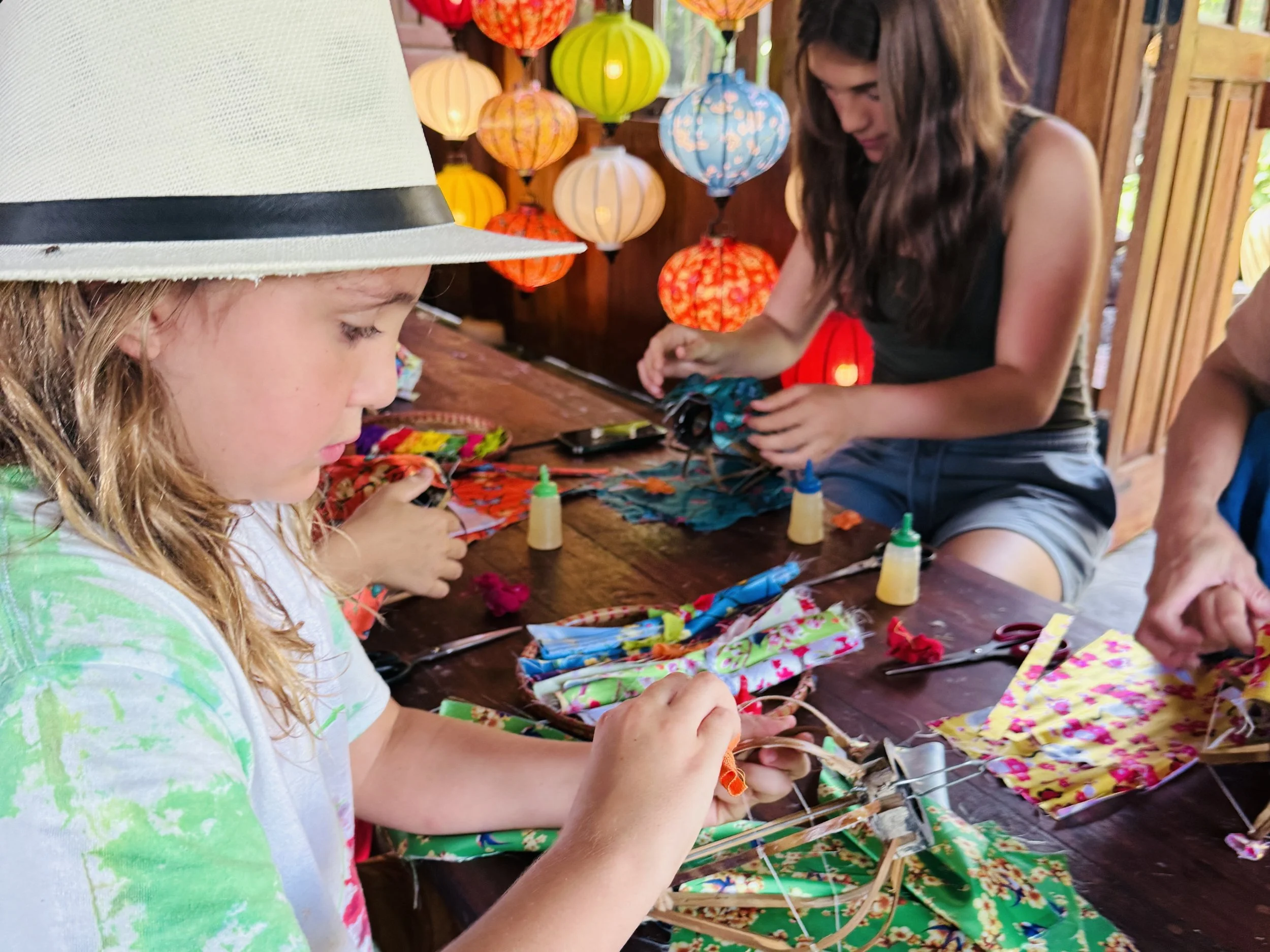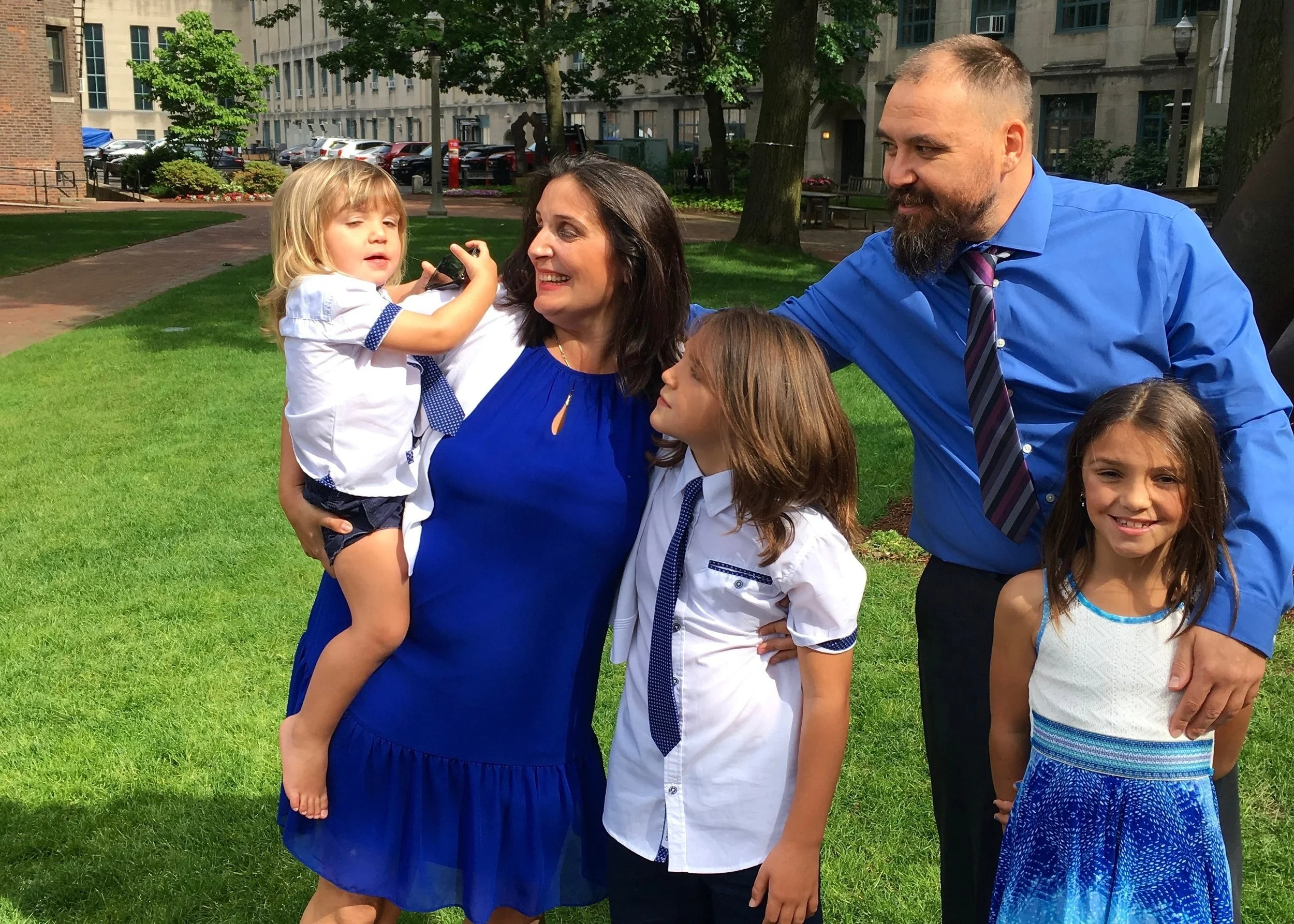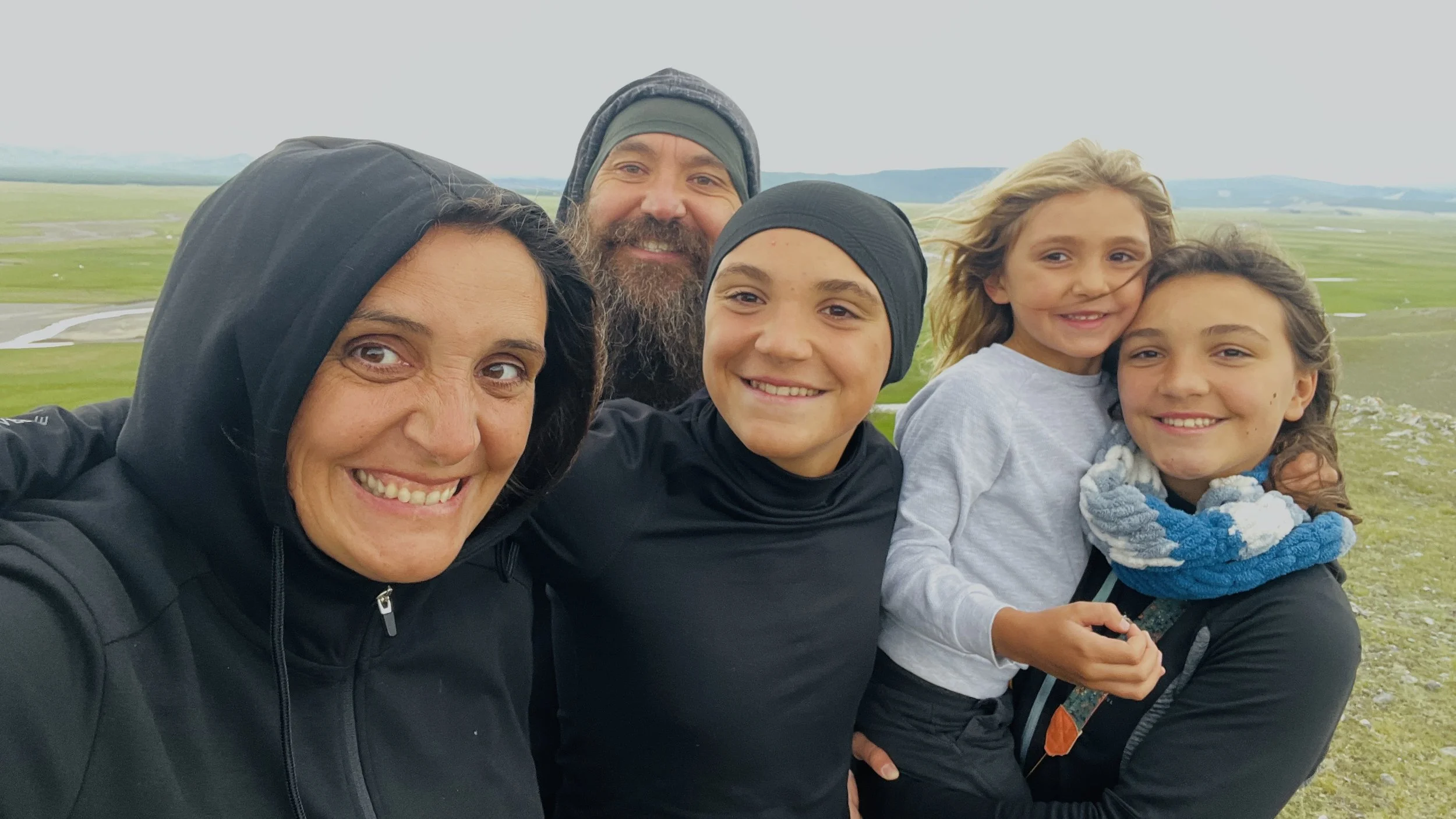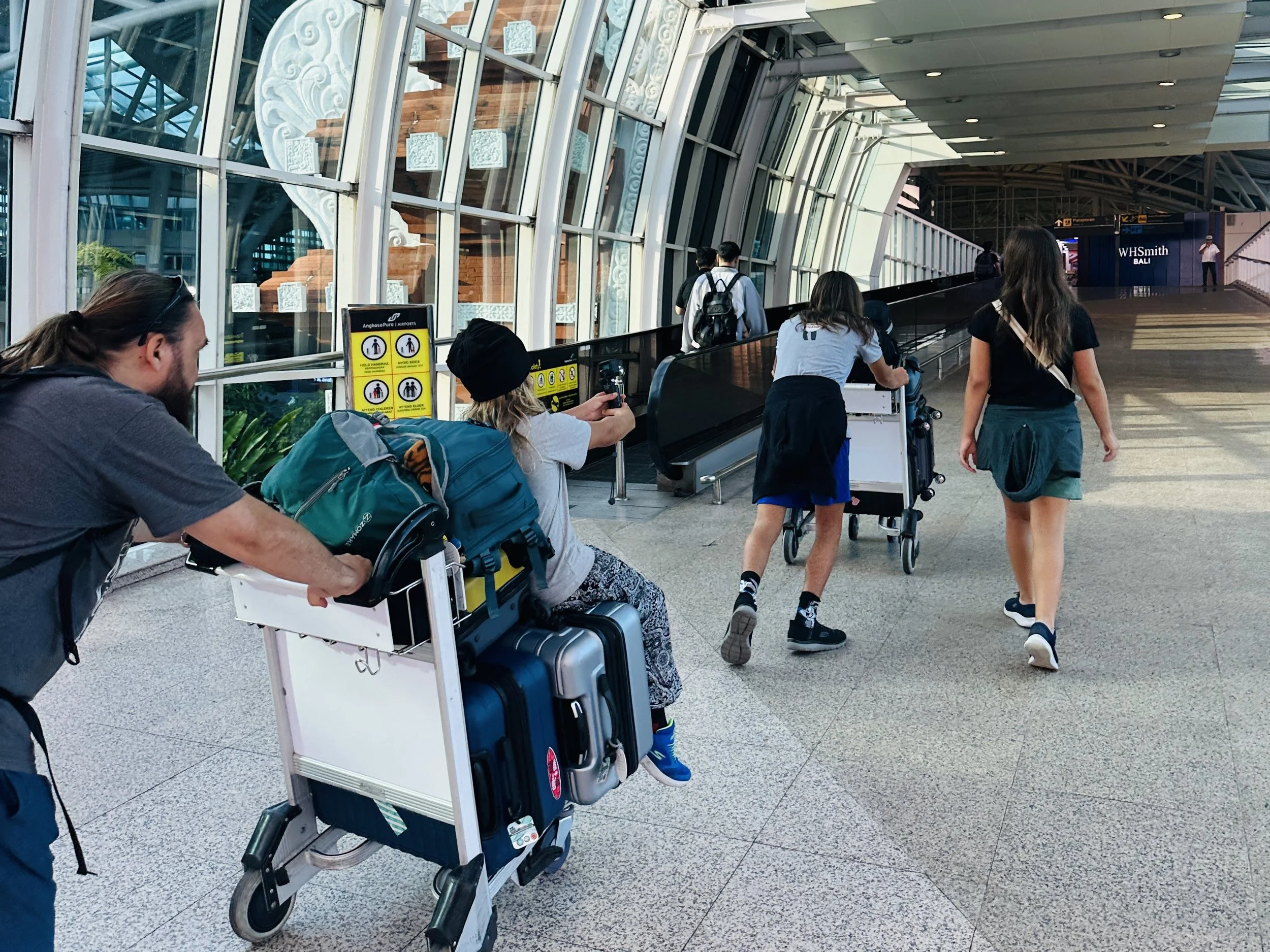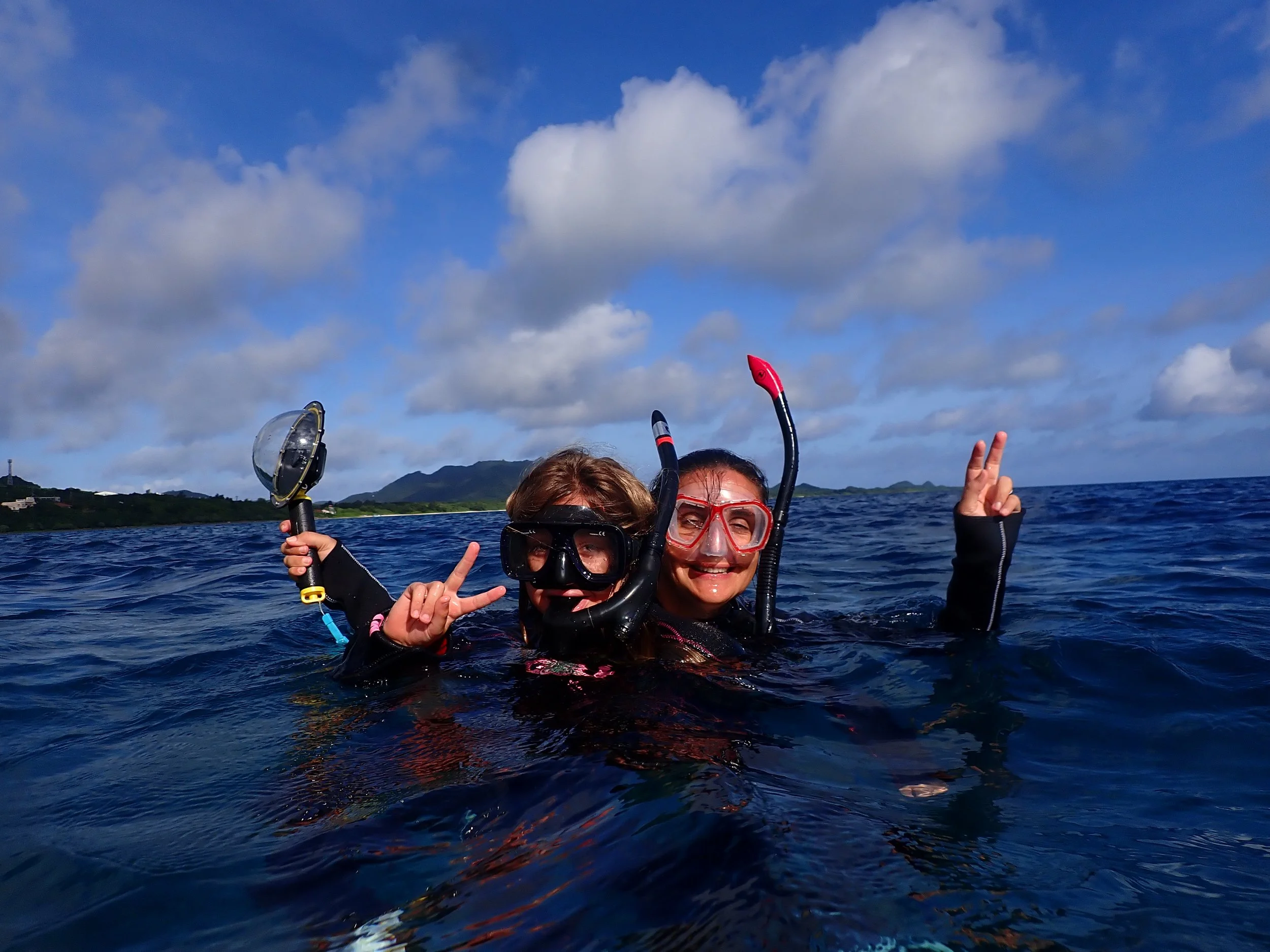Family-Friendly Accommodation: Hotels vs. Airbnbs vs. Resorts – Which is Right for You?
Traveling with kids means finding the right place to stay can make or break your trip. After seven years of full-time family travel, we’ve stayed everywhere—cozy city hotels, spacious Airbnbs, and relaxing all-inclusive resorts. Each has its perks, challenges, and perfect situations. In this guide, I share our real-world experiences to help you decide which option best suits your family’s style, budget, and trip goals.
Planning a family trip is exciting; you imagine the new sights, the delicious food, and the unforgettable experiences you’ll share together. But before you can jump on that plane or hit the road, there’s one big decision to make: Where are we going to stay?
And for many families, that’s where the overwhelm begins.
Should you book a hotel with its familiar comfort and convenience?
An Airbnb or vacation rental that feels like a home away from home?
Or a resort where everything you could want is right on site?
As a family of five who has been traveling full-time for over seven years, we’ve tried them all, sometimes out of choice, other times because that’s what was available. Each option has its pros, cons, and ideal situations, and over time, we’ve determined what works best, depending on our trip style, destination, and budget.
If you’re planning your next family adventure and wondering which accommodation is right for you, let’s break it down.
Celebrating my birthday in a beautiful hotel on Xandu Island in Türkiye
Hotels: Convenience and Reliability in One Package
Hotels are the old faithful of the travel world. Whether you’re staying in a small boutique property or a large international chain, you generally know what to expect. For families, this can be a huge relief, especially if you’re traveling to a new destination for the first time. Personally, one of my favorite parts of staying in a hotel is the included breakfast. I always check if it’s available before booking because there’s just something about heading down to the restaurant in the morning, coffee in hand, and enjoying a leisurely breakfast without having to cook or clean. It feels like a mini vacation within the vacation.
Why Hotels Can Be Great for Families
On-Site Amenities: From breakfast buffets to swimming pools, fitness centers, and sometimes even kids’ clubs, hotels offer conveniences that make traveling with children easier.
Daily Housekeeping: Let’s be honest, traveling with kids means things get messy quickly. Having someone tidy up daily is a small luxury that can make a big difference.
Service and Security: A front desk that can help with directions, call a taxi, or handle emergencies is a comforting safety net, especially in unfamiliar places.
Location, Location, Location: Hotels are often situated in central areas, close to popular attractions, restaurants, and transportation hubs.
Favorite breakfast for Luca in Doha, Qatar
The Downsides of Hotels
Space Can Be Tight: Standard hotel rooms often mean cramming everyone into one room. Some hotels offer family suites, but these can be expensive.
Limited Cooking Facilities: Without a kitchen, you’ll likely be eating out for every meal, which can get pricey (and exhausting if you have picky eaters).
Cost for Larger Families: You may need to book two rooms if the property doesn’t allow extra beds, and that can double your nightly rate.
Sharing the room in North Macedonia
When Hotels Work Best for Families
We’ve found hotels ideal for short city stays, layovers, or trips where we’re out exploring most of the day. For example, during our stop in Tokyo, we chose a centrally located hotel right next to the subway. The room was small, but we were barely there except to sleep. The convenience of being close to public transportation made it well worth the investment.
Airbnbs & Vacation Rentals: Your Home Away from Home
When we first started traveling full-time, Airbnbs quickly became a favorite. They gave us the space and flexibility we needed, especially when the kids were younger and eating at home was essential. Now that they’re older, having their own space has become just as important for maintaining a good balance during our travels. We all have different routines, and if we don’t have to share a single room, everyone can enjoy their time more (and get along a lot better).
Luca and Mass enjoying the couch in our Airbnb in Costa Rica
Why Vacation Rentals Can Be a Family’s Best Friend
More Space: Separate bedrooms, living rooms, and sometimes even outdoor areas mean everyone gets breathing room.
Kitchen Access: Being able to cook your meals can save a significant amount of money and help maintain routines for younger kids and picky eaters.
Laundry Facilities: A washer and dryer are a game-changer for long-term travel, reducing the need to overpack and preventing laundry emergencies.
Local Neighborhood Feel: Staying in a residential area can provide a more authentic experience of local life. However, these days, you can also find plenty of vacation rentals in very central locations.
Emma and Cosimo are enjoying the kitchen in our Airbnb in Phalaborwa, South Africa
The Downsides of Vacation Rentals
Inconsistent Quality: Not all listings live up to their photos or glowing reviews. We’ve learned to carry a few essential kitchen utensils, just in case the rental is missing something crucial. We have a video about them here!
Extra Fees: Cleaning, service, and “extra guest” charges can add up quickly.
Less Immediate Support: There’s no front desk to solve problems instantly. If the Wi-Fi stops working, you’re relying on your host to resolve the issue.
When Vacation Rentals Work Best for Families
We love Airbnb and other vacation rentals for more extended stays or when we want to slow down in one place. In Hoi An, Vietnam, we rented a house for a month that had a pool, a spacious kitchen, a lovely living area, and three bedrooms, plenty of space to spread out. The property even came with bikes, allowing us to get around town easily. The kids could have their own areas, we could cook most of our meals, and best of all, it truly felt like home.
Cosimo and Emma are enjoying the space in our Hoi An, Vietnam Airbnb
Resorts: All-Inclusive Fun and Relaxation
Resorts can feel like stepping into a bubble of vacation bliss. Everything you need - food, entertainment, and activities - is right on site. For some families, that’s precisely what’s required, especially when the goal is pure relaxation.
When we stayed at our first all-inclusive in Mexico Catalonia Costa Mujeres All Suites & Spa, after traveling full-time for three years, we loved it so much that we extended our stay by an extra five days. It was such a refreshing break from all our usual travel responsibilities that none of us wanted to leave.
Cosimo and Emma at Catalonia Costa Mujeres All Suites & Spa
Why Resorts Can Be Perfect for Families
All-Inclusive Options: Meals, snacks, drinks, and often activities are included, which makes budgeting easier.
Endless Entertainment: Pools, waterslides, kids’ clubs, and organized activities keep children happily occupied.
Safety and Security: Gated properties and staff on-site 24/7 give peace of mind.
Relaxation for Parents: Knowing the kids are busy (and safe) lets parents unwind.
Luca is going to order his food at Catalonia Costa Mujeres All Suites & Spa
The Downsides of Resorts
Less Local Immersion: If you don’t leave the property, you may miss out on authentic cultural experiences. We usually enjoy the resort itself and then explore the area afterward, but since we travel full-time, we can organize our time more flexibly.
Higher Upfront Cost: While you might save on meals and activities, the initial price can be steep.
Fixed Schedules: Meal times and activity slots may not always fit your family’s rhythm.
When Resorts Work Best for Families
Resorts are ideal for beach vacations, milestone celebrations, or moments when you simply need to recharge.
During our stay in Mexico, the kids loved the daily activities, and we appreciated knowing that meals were taken care of. They would wander off on their own to grab lunch from the different food stands, then spend the entire day swimming at the beach or playing in the pool. The entertainment team always had something fun planned, and the nightly shows were terrific. It was one of those rare trips where no one complained about being bored or hungry.
Mass and I enjoying a spa date at Catalonia Costa Mujeres All Suites & Spa
How to Decide: A Family Accommodation Checklist
When choosing where to stay, ask yourself:
Trip Length: Short trip or extended stay?
Purpose of Trip: Relaxation or exploration?
Budget: What’s your total nightly cost, including meals and transportation?
Space Needs: Will one room be enough, or do you need separate areas?
Food Plans: Do you want to cook or eat out?
Kids’ Ages & Needs: Do they need naps, play areas, or specific amenities?
Enjoying the space in our hotel in Hanoi, Vietnam
Our Personal Take
We’ve learned there’s no single “best” option; it all depends on the trip.
Hotels are our go-to for short city breaks or stopovers.
Airbnbs are ideal for longer stays, especially when we need space to work and homeschool.
Resorts are perfect when we want a break from planning and relax together.
The beauty is, you can mix and match. On one trip, we’ve stayed in a resort for a few days of rest, then moved to an Airbnb in the city for exploration.
Luca making his breakfast in Costa Rica
Final Thoughts
Over the years, we’ve stayed in just about every type of accommodation, from tiny city hotel rooms to sprawling vacation homes and all-inclusive resorts. Each one has its time and place, and our choice often depends on the destination, length of stay, and what we want from that trip.
Sharing some time on the same bed in Hawaii
Since we travel full-time, we often opt for Airbnb accommodations over other options, especially in countries with high living costs. Having a kitchen means we can cook our meals, which helps us keep costs down, and we also get the bonus of extra space for everyone to spread out.
That said, we still happily choose hotels for short stays, city breaks, or when we want the ease of included services. The cool thing is that more hotels are starting to offer apartment-style rooms with kitchenettes, which still include breakfast. During our recent stay in Phnom Penh, we experienced the best of both worlds: the space and cooking facilities of an apartment, combined with a delicious breakfast waiting for us every morning.
Ultimately, there’s no single “right” choice; it’s about finding the accommodation that best matches your travel style, needs, and priorities for that particular trip. And if you’re ever unsure which option might work best for your family, I’m happy to share my experience and help you find the perfect fit as your travel agent.
Why We Prioritize Experiences Over Destinations (And How You Can Too)
After years of full-time family travel, we’ve discovered that the real magic doesn’t come from checking off landmarks; it comes from the experiences that connect us to the people, culture, and spirit of a place. From cooking Khmer curry in Cambodia to drifting along the Mekong in a sampan boat, it’s these immersive moments that have shaped our journey the most. In this post, I’m sharing how shifting our focus from destinations to experiences transformed our travels and how it can do the same for yours.
Let’s be honest...
Most travelers plan their trips around a place:
“We’re going to Paris!”
“Let’s see Machu Picchu!”
“Tokyo is on our bucket list!”
But after years of full-time travel as a family, we’ve learned that the true magic doesn’t come from checking off destinations.
It comes from what you do when you’re there.
From making fresh spring rolls in Cambodia to sandboarding in the Peruvian desert, our most memorable moments come from experiences that connect us to people, culture, and nature, not from landmarks.
Here’s why we’ve shifted from chasing places to seeking experiences and how that simple mindset change has transformed our travels.
Dune surfing in Huacachina, Peru
1. It Started With One Unexpected Moment
When we first started traveling full-time, I had a checklist packed with famous sites we had to see. We rushed through museums, monuments, and “top 10” attractions, trying to squeeze in as much as possible.
Then the pandemic hit, and we found ourselves stuck in Nepal. During that unexpected pause, something shifted. We had the chance to interview a local artist for our YouTube channel (AMAR SHAKYA, PAUBHA ARTIST in Nepal. People we meet), and in the process, he offered to teach our kids his artistic techniques. A few days later, we also interviewed our hosts, who gave us a place to stay for a reasonable price the night before Nepal went into lockdown (COSY NEPAL in PATAN, Nepal. People we meet), and that’s when everything changed.
That’s where we found a real connection.
That’s where we discovered the true inspiration behind our travels.
It wasn’t about checking off landmarks anymore.
It was about slowing down and connecting, on a deeper, more meaningful level, with the people and culture around us.
That was our turning point. We realized the moments we remember most aren’t the biggest or most famous, they’re the ones where we engage, share, and genuinely feel where we are.
2. Cambodia: From Street Food to Circus Magic
Let me give you a more recent example. When we visited Cambodia a few months ago, we naturally marveled at Angkor Wat and spent time exploring the temples.
But what we really remember is making Khmer curry together during a local cooking class in Siem Reap. After picking up our ingredients at the local market, we were welcomed into a small open-air kitchen. Our teacher showed us how to grind spices by hand, cook over an open fire, and finish our dishes with delicate banana leaf flowers.
The kids were so proud of what they made, especially Luca, who almost burned himself while enthusiastically stirring the meat in the pan. Despite the near mishap, we all finished every bite with big smiles.
That evening, we attended the Phare Circus, an incredible performance blending storytelling, acrobatics, and music. What made it truly unforgettable was learning that the performers were all young people from disadvantaged backgrounds, trained through a social arts school. The show wasn’t just entertaining, it was profoundly moving. I found a ticket option on Viator that allowed us to go behind the scenes, and it gave all of us a much greater appreciation for the effort, passion, and dedication these artists pour into their craft. It left a lasting impression on every one of us.
A beautiful moment also occurred backstage. As we watched the artists prepare, Mass noticed a therapist massaging one of the performers who seemed to be in pain. With his background in physical therapy, he offered to help. The therapist welcomed his support, and within minutes, the artist began to feel better. Soon, more performers began lining up for a quick check-up from Mass. It turned into a spontaneous collaboration, and what struck us most was how open and grateful everyone was. The therapist didn’t feel threatened; she just felt relieved to have extra help healing her team. That moment revealed a great deal about the values of this culture: community, humility, and care for one another, without ego or competition.
Those two experiences, cooking and the circus, offered more cultural understanding than any guidebook or history tour ever could.
And while we found these activities online (some through Viator, others through local tips), what mattered most wasn’t how we booked them, but how they made us feel.
Phare Circus group shot in Siem Reap, Cambodia
3. Vietnam: Lanterns, Sampans, and Slow Moments
Vietnam gave us so many sensory memories: the scent of fresh herbs, the buzz of scooters weaving through the streets, and the warmth of the people everywhere we went. But two experiences stood out above the rest.
In the charming town of Hoi An, we took part in a traditional lantern-making workshop. Surrounded by silk fabric, bamboo frames, and excited chatter, our kids created their lanterns from scratch. The process was calming and almost meditative. We carefully glued the fabric, bent the frames, and chose colors that reflected our personalities.
The kids were entirely focused, and by the end, each of them proudly held a handmade lantern, a small piece of Vietnam that we had shaped with our own hands, and was coming home with us.
Later in the trip, we headed south to the Mekong Delta, where we climbed into a small wooden sampan boat, made home for a few nights, and quietly glided through narrow canals. Everything slowed down. The only sounds were the gentle rhythm of the river, children splashing and laughing in the water, and the occasional passing boat loaded with rice, fish, or bricks, products of life lived along the riverbanks.
It was peaceful, even for our kids, who usually aren’t fans of “slow.” But something about being rocked by the current and witnessing everyday life along the Mekong calmed us all. There was no rush, no loud noise, just stillness, simplicity, and presence.
That boat ride wasn’t thrilling in the typical sense, but it offered us a quiet, powerful connection to the land and the people, a connection that’s hard to put into words and impossible to forget.
These two moments, crafting lanterns and drifting through the Mekong, reminded us just how powerful simple, hands-on experiences can be. They slowed us down and pulled us into the heart of Vietnamese culture in a way that no big-city tour ever could.
5. What Happens When You Travel for the Experience
When we focus on doing rather than just seeing, something shifts:
We connect with the people who live there
We learn about daily life, culture, and values in a hands-on way
We remember the trip more vividly and longer.
Our kids stay engaged because they’re part of the action
We return home changed, not just rested.
6. How to Start Prioritizing Experiences Over Destinations
You don’t have to overhaul your entire travel style; shift your focus a bit. Here’s how:
🧭 Ask Different Questions
Instead of: What’s the top place to visit in this country?
Ask: What do we want to experience, feel, or learn while we’re here?🔍 Look for Local-Led Opportunities
Cooking classes, artisan workshops, food walks, farm visits, and storytelling events all offer a glimpse into real life.
We often use a combination of online platforms (such as Viator or GetYourGuide), local Facebook groups, and personal recommendations to find these.
👨👩👧👦 Let the Kids Pick
Ask your kids what they want to try: climbing, dancing, building, painting, eating, and let their curiosity lead.
⏳ Leave Room for Discovery
Don’t overbook every day. Some of our best experiences happened when we slowed down or had “open” afternoons.
7. But What About the Famous Stuff?
Of course, we still visit famous places! We’ve stood in awe at the Taj Mahal, explored the temples of Angkor Wat, and even gone up the Eiffel Tower, twice!
But instead of racing through 10 sites in 3 days, we choose fewer places and go deeper.
When we visit iconic landmarks, we look for ways to make the experience more personal and meaningful. That might mean:
Hiring a local guide to share stories and history beyond the surface
Booking an experience that helps us better understand the local culture
Letting the kids engage in their way, through questions, photos, video, or simply quiet observation
These small shifts turn famous sights into lasting memories.
They’re no longer just photos in a camera roll, they become part of our shared story.
8. Why This Matters (Especially for Families)
When traveling with kids, attention spans, energy levels, and moods are crucial.
They’re not likely to remember a monument, but they will remember making something, tasting something, or talking to someone.
Experience-first travel:
Builds empathy
Sparks curiosity
Strengthens family bonds
Feels more human
It’s not just about what you see. It’s about what you feel together.
9. What I’ve Learned from Planning Our Adventures
After traveling full-time since 2018, I’ve had my fair share of trial and error when it comes to planning meaningful trips for our family. I’ve learned that it’s not just about where you go, it’s how you experience it. And honestly, the most memorable moments usually aren’t the ones that take the most planning, they’re the ones that feel the most authentic.
Over time, I’ve found a rhythm in how I research and choose activities. I start by thinking about what we’re curious about, what could help us understand the place, or connect with the people who live there. Then I look for experiences that feel aligned with that, whether it’s a cooking class, a street food tour, a hands-on workshop, or a slow boat ride through nature.
I’ve also learned to balance cultural exploration with fun and downtime, especially when spending time with kids. When I find something that works well for us, I love sharing it with other families who are trying to create their meaningful adventures.
Lately, I’ve discovered many great experiences through Viator; it’s been a helpful resource for finding locally led activities that are easy to book, especially in unfamiliar places. But no matter how we see them, it’s the feeling they give us that matters most.
If you’re trying to plan something that goes beyond the typical tourist trail, know that you don’t have to overcomplicate it. Start with curiosity, leave room for spontaneity, and let connection lead the way.
Final Thoughts
Where you go does matter, but what you do while you’re there matters even more.
Traveling for experiences doesn’t mean skipping the Eiffel Tower or Machu Picchu.
It means slowing down, asking questions, meeting people, and finding the joy in the little things.
So next time you plan a trip, ask yourself:
👉 What experience do I want to come home remembering?
Chances are, it won’t be a selfie in front of a monument; it’ll be the moment your kids tried something new, or the conversation you had over a meal you helped cook together.
Let those be the moments that define your travels.
Why I Started My Travel Business (And How It Can Help Families Like Yours)
After years of traveling the world full-time with my husband and three kids, I decided to turn our experience into something bigger, a way to help other families create unforgettable adventures of their own. In this post, I share the story behind Limitless Travel Life, why I started this travel business, and how I support families who dream of traveling differently, whether for a few weeks or a whole lifestyle shift.
In 2018, we made a life-changing decision: we left behind the predictable rhythm of everyday life to travel the world full-time as a family of five.
It wasn’t a decision we made lightly, but deep down, we knew we were craving something more, more connection, more learning, more life.
We packed what mattered, let go of what didn’t, and flew to Bali. It was our first step into a lifestyle that would challenge us, change us, and ultimately shape who we are today.
At the time, we had no intention of making this a business. We just wanted to experience the world together. But as we continued to travel across continents, cultures, and seasons of life, something beautiful started to unfold.
The World Became Our Classroom
One of the most beautiful shifts that came with full-time travel was in the way our kids learned. We didn’t just take them out of school, we took them into the world. We didn’t have a set curriculum or perfect plan, but somehow, everything became a lesson.
They learned history while walking through ancient ruins in Italy, Turkey, Egypt, and other locations. Geography came alive through train rides in Mongolia, hiking in New Zealand, and many other places around the world. Biology was explored while snorkeling in Bali or spotting orangutans in Borneo. They met people who spoke different languages, ate food they’d never tried before, and slowly, their worldview expanded, and so did ours.
This approach, often referred to as worldschooling, isn’t about recreating school on the road. It’s about embracing curiosity, following interests, and letting life itself become the classroom. It’s messy and magical all at once. And it’s one of the things I cherish most about this journey.
“How Do You Do It?”
As we traveled, we began sharing our story online through our blog, The 5 World Explorers, and our YouTube Vlog. We weren’t trying to become anything; we just wanted to document the adventure so our kids would always have it as a memory and stay connected to friends and family. But over time, our inbox began filling with messages:
“How do you plan all of this?”
“What do you do about education?”
“Is this doable with kids?”
“Can you help me plan a trip like this?”
These weren’t people looking for luxury resorts. They were parents like us, curious, maybe a little overwhelmed, but deeply craving something different for their families.
Initially, I answered questions sporadically. Then came video calls. Then came helping others plan their first big trips.
That’s when I realized something: this wasn’t just our story anymore. I could help others write theirs.
A Business Rooted in Experience
That’s how Limitless Travel Life came to be, not as a business plan, but as a natural extension of what we were already doing.
I didn’t set out to become a travel advisor. I just knew what it felt like to want more out of life, and to wonder if it was possible with kids in tow. I had learned a great deal about logistics, planning, slow travel, packing light, and making a new place feel like home, and I wanted to share this knowledge with others in a meaningful way.
This isn’t a big agency. I don’t do flashy group tours or high-end vacation packages. What I offer is real-world insight from someone who has lived this life and continues to live it.
Why I Help Families Travel Differently
Because travel can be more than just a break, it can be a reset, a reconnection, a new way of seeing everything.
It doesn’t have to mean selling everything and leaving for years.
Sometimes, it’s two weeks somewhere unexpected. Sometimes, it’s adding more intention to your next family vacation. Sometimes, it’s simply believing that your family deserves adventure, too.
What I’ve learned and what I try to share is that there isn’t one way to travel. But there is your way. And it’s worth exploring!
💛 Why It Matters
I didn’t start this business to sell trips. I started it because I know how transformative travel can be, especially when shared as a family.
Whether you're curious about worldschooling, overwhelmed by the planning process, or just dreaming of something different, I want to help you take that next step. You don’t need to figure it out alone.
Some families want to explore deeper. Others want to travel smarter. I’m here for both, because there’s no one right way to do this, only your way.
📬 Let’s Connect
If this resonates with you, I’d love to hear from you. I offer a complimentary 20-minute discovery call (which you can book by emailing me at limitlesstravellife@gmail.com) to determine if we’re a good fit, or you can reply with a question.
Your dream family adventure doesn’t need to wait for someday. Let’s start exploring what’s possible together.
With gratitude,
Sarah
